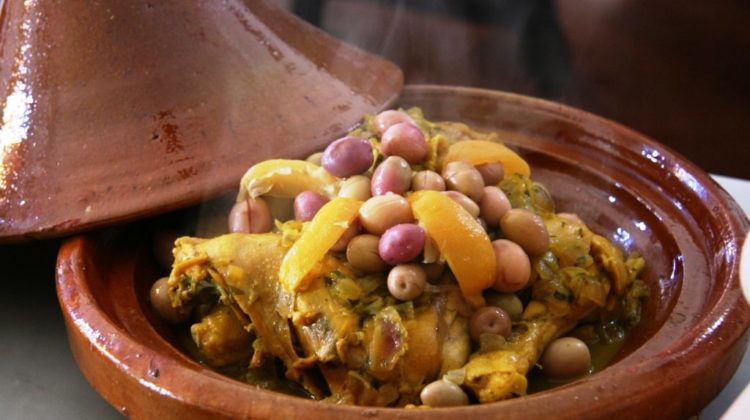
Moroccan cuisine is revered worldwide for its rich and diverse flavors. It skillfully blends influences from the country’s historical heritage and unique geographic location.
In Morocco, you’ll discover a delightful fusion of Arab and Berber culinary traditions, complemented by inspirations drawn from Southern Europe.
Some links below may be affiliate links. As an Amazon Associate I earn from qualifying purchases.
Table of Contents
What is traditional Moroccan cuisine?
Moroccan cuisine revolves around the traditional Berber diet, featuring lamb, vegetables, and dairy, all complemented by a delicate mix of spices like cumin, turmeric, paprika, and cayenne, as well as aromatic herbs such as mint, coriander, and parsley.
Incorporating influences from Southern Europe, Moroccan dishes often include olives, olive oil, and tomatoes, adding depth to the flavors.
The most popular meals typically center around meat (excluding pork due to Muslim dietary restrictions), making it a bit challenging for vegetarians to find meatless options.
If you mention you’re a vegetarian at a restaurant, you might often be offered fish instead! Locals particularly favor beef, prominently featured in couscous and tagine dishes, often slow-roasted for hours before serving.
Lunch holds the spotlight as the main meal in Morocco, usually more substantial than breakfast or dinner. It commonly includes a starter salad, followed by beef tagine accompanied by a generous bowl of couscous.
Bread serves as a customary accompaniment, and mint tea takes precedence as the beverage of choice.
Explore our guide to the main dishes of Morocco and immerse yourself in the delightful flavors of Moroccan cuisine.
Couscous
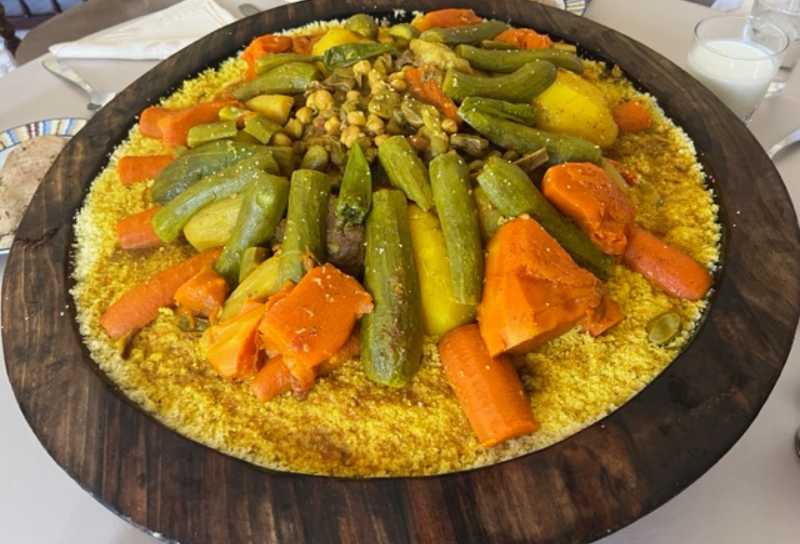
Couscous is probably the dish for which Morocco is best known. It is traditionally eaten on Fridays with the whole family present, after the weekly sermon at the mosques has finished.
Correct preparation often takes the full morning, as one must prepare a stewed chicken, vegetables, or meat with broth, make a sweet, spiced sauce made of onions and raisins, and carefully steam the couscous.
In restaurants, it is often served with lben, a tangy fermented milk much like kefir. It goes well with the rich flavors of couscous.
Tagine
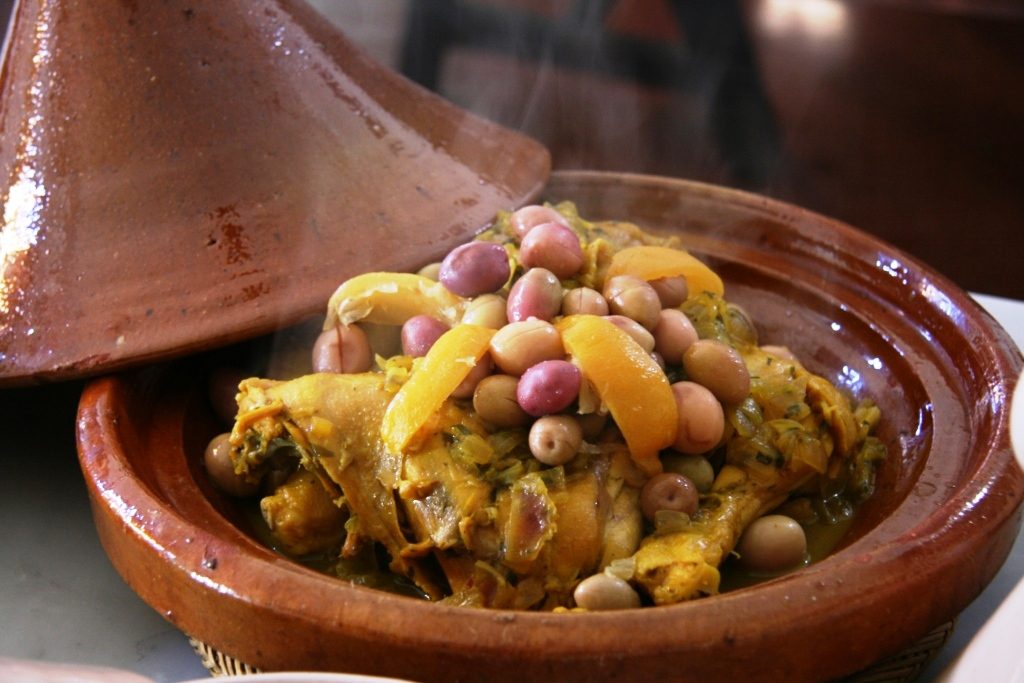
Tajines are some of the most popular dishes throughout the country and can be made with almost anything – vegetables, chicken, fish, shrimp, beef, sheep, or camel.
The main ingredient is placed in the dish, along with some oil, a little water, spices, and vegetables. Meat and chicken are also often accompanied by olives, almonds, apricots, or prunes.
The dish is covered and baked until the ingredients are tender, fragrant, and piping hot.
The combination of all of these ingredients acts to give a sweet and sour flavor. Popular versions include chicken with lemon, beef with prunes, and lamb with dates.
Harira
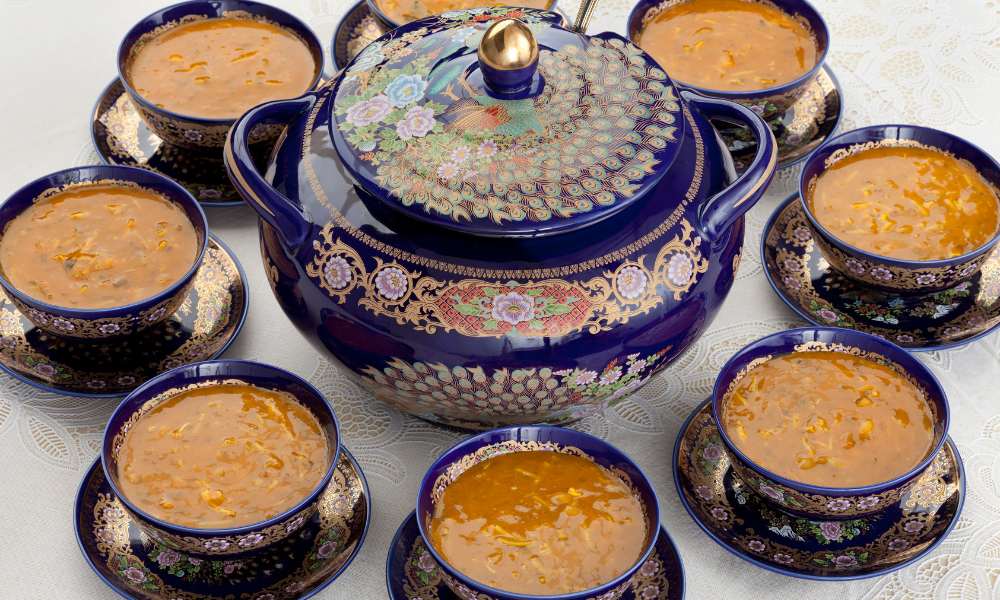
Harira may be one of the most important dishes in Morocco because of it’s role during Ramadan – it is made in households across the country to be eaten as part of the breaking the fast meal.
During the Muslim holy month, you’ll see giant kettles simmering in every restaurant, and smell its inviting aroma wafting from every home.
Made of a light tomato broth with various add-ins – noodles, lentils, chickpeas, – and a little bit of mutton or chicken for flavor, harira is the perfect thing to eat after a long day of fasting.
It’s also great as a quick snack to warm up on chilly winter evenings.
Pastilla
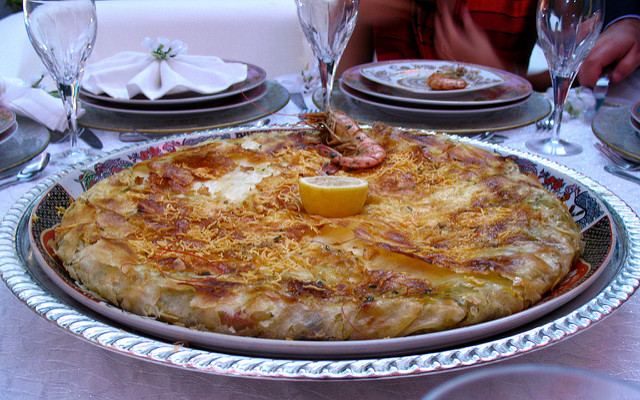
Pastilla is a pastry-like dish made from spiced pigeon, although when pigeon isn’t available, chicken or fish can be used as a substitution.
It’s often served as an appetiser, and locals consume it on special occasions. Similar to a meat pie, the crust of pastilla is flaky and rich, while the meat remains tender and juicy.
Khobz
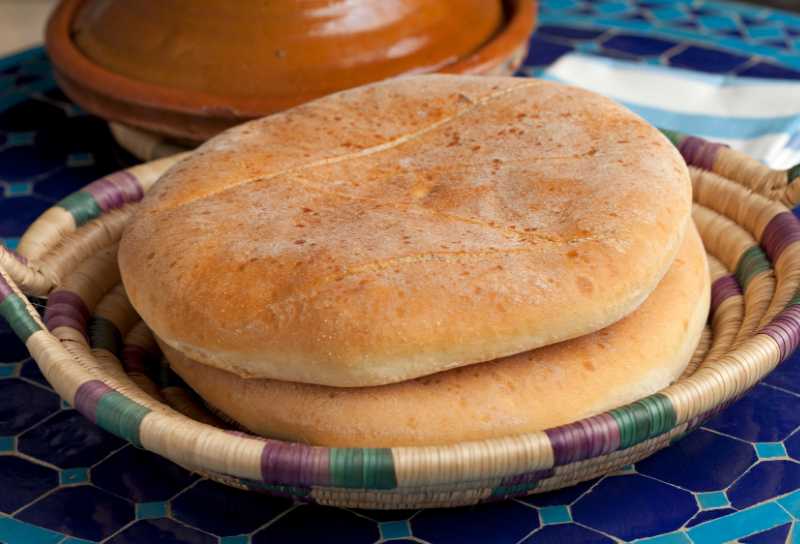
Morocco boasts a stunning range of traditional breads, which, to add to the complexity, differ by region, bakery, and even household!
There’s the classic hobz, yeasted, oven-baked rounds about an inch thick most commonly used for eating with meals.
You’ll see rghifa, a square-shaped, griddle-cooked flat bread that is perfect for breakfast when spread with honey and butter (there are delicious savory versions too, made with chicken fat and onions!).
Harcha, a small, circular bread made from semolina is nice for a small sandwich with honey and butter, or savory fillings like jben arabi, traditional fresh cheese. And then there’s baghrir, a stunning masterpiece of bread engineering.
It’s like a thick, yeasted crepe, but dotted with dozens of tiny holes that make it perfect for soaking up amlou, a honey-sweetened almond butter.
You can find all these types in a range of different sizes, in addition to many other types of bread made with whole wheat, barley, spices, and more.
Explore Moroccan Recipes on Amazon
Ready to discover the flavors of Morocco in your own kitchen? Check out these Moroccan recipe books available on Amazon
Seafood
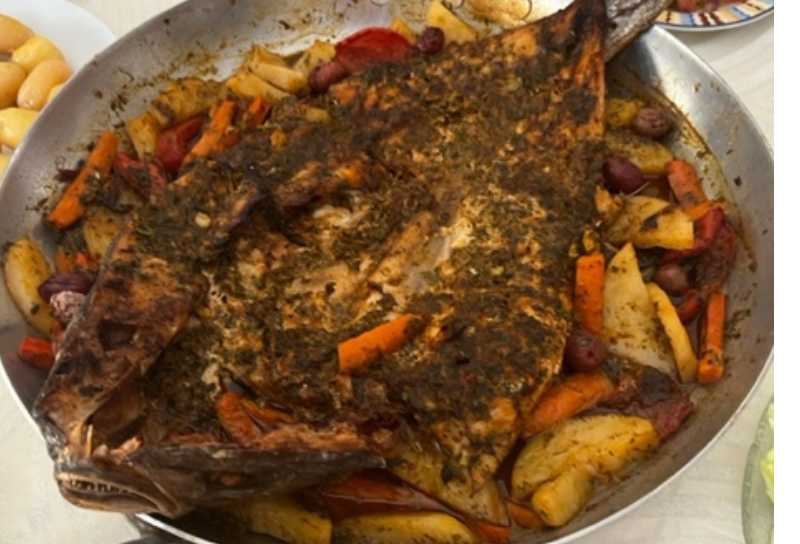
Seafood is hugely popular along Morocco’s long coastline. Fishermen bring in a daily catch that includes a wide variety of fish, shrimp, and squid.
A popular seafood dish is fritura, a big platter with a mix of deep-fried fishes, shrimp, and calamari rings.
Other popular dishes are chouwaya d lhout, simple and delicious barbecued fish, and tajine d lhout, fish cooked in a tajine with potatoes, peas, red peppers, and spices.
Rfissa: A Beloved Moroccan Delicacy
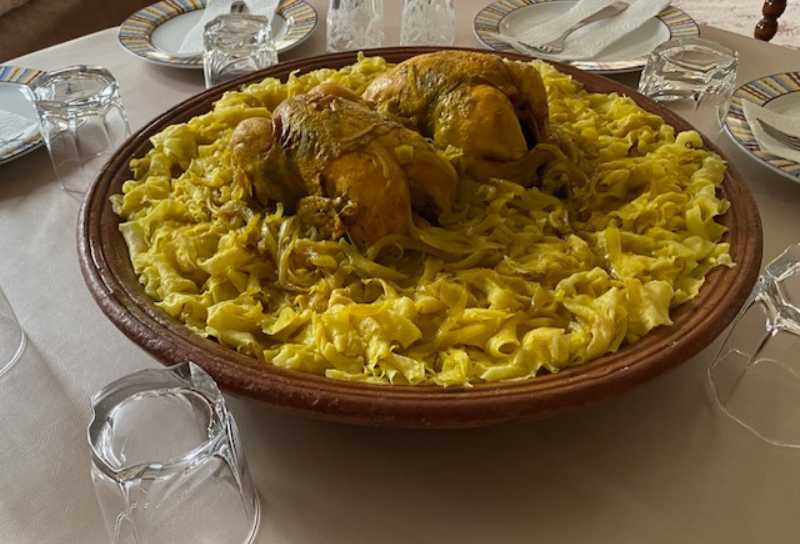
Rfissa, a traditional Moroccan dish, holds a special place in the hearts of many. This flavorful delight combines shredded chicken, lentils, and thin layers of msemen, a Moroccan flatbread. Aromatic spices like ginger, saffron, turmeric, and ras el hanout infuse it with captivating taste.
Preparation of Rfissa is a labor of love, with chicken boiled to tender perfection and carefully shredded. Lentils are cooked to a soft texture, and msemen is steamed and soaked in a chicken-lentil broth, absorbing rich flavors.
Served on special occasions and family gatherings, Rfissa carries cultural significance, especially in postnatal celebrations. Dubbed “Rfissa de Nfissa,” it honors the woman who has given birth, adding warmth and joy to the occasion.
While preserving its timeless charm, modern Rfissa versions feature adorned presentations with young chickens, almonds, and hard-boiled quail eggs, adding visual delight.
Bisara

Bisara is a thick, creamy soup made from just one main ingredient: fava beans. It is flavored with onion, garlic, and olive oil, and served with cumin and more olive oil drizzled on top.
It is particularly popular in the Tangier and Tetouan region, and is one of the cheapest meals available. For 50¢ to $1, you can get a bubbling bowl of the soup, along with a round loaf of bread and sometimes a scoop of olives.
Mint Tea
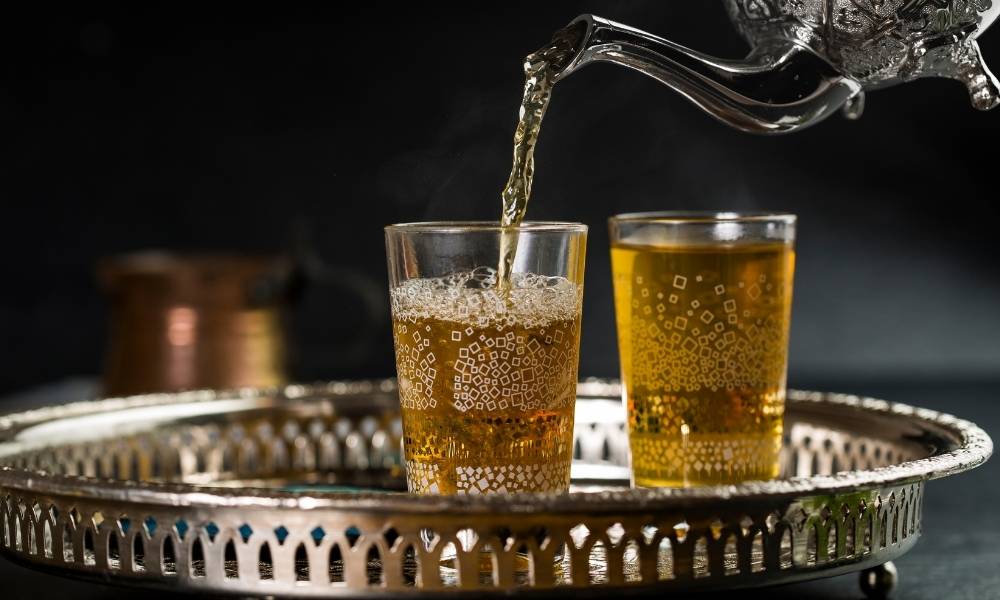
Mint tea can be found everywhere in Morocco and is consumed throughout the day, every single day. It’s the most popular drink in the country and is made from green tea, with peppermint and sugar added.
You’ll likely be offered mint tea with every meal, or in most stores you visit.
One of the most interesting parts of drinking mint tea is the preparation, with the tea being poured into the tiny drinking glass from a teapot held at a great height.
Sampling Morocco’s cuisine should be one of your priorities as you travel across the country. Expect to experience tender, slow-cooked meat, flavorful vegetables and a unique combination of spices that act to enhance rather than mask the flavors
Seasonal Fruits
Fruit is Morocco is abundant and cheap, in the range of 50¢ to $3 a pound for strawberries, oranges, peaches, figs, avocados, apples, pears, grapes, and more.
One of the most delicious ways to eat the seasonal fruit is in a smoothie, known in Morocco as assir or jus (French for juice).
Stop by one of the many mahlaba, snack shops often advertised by large bunches of fruit hanging outside. They’ll blend whatever fruit they have with milk, orange juice, nuts, or dates, as per your request.
Dates
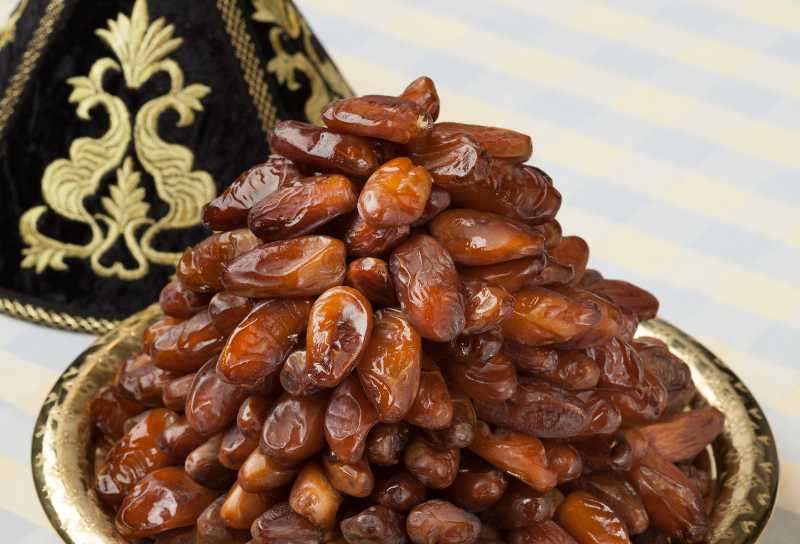
Dates are one of the most symbolic foods throughout the Muslim world, since they are mentioned many times in the Quran and used to break the fast during Ramadan.
They are also presented to wedding guests along with a small glass of milk, as a sign of hospitality.
In the markets, you can buy dates from Morocco as well as dozens of types from other countries including Tunisia, Saudi Arabia, the UAE, and Iraq.
Each type of date has a slightly different color, size, texture, flavor, and moisture content, and every Moroccan has a favorite. Vendors will usually let you taste before buying, so you can find your favorite, too
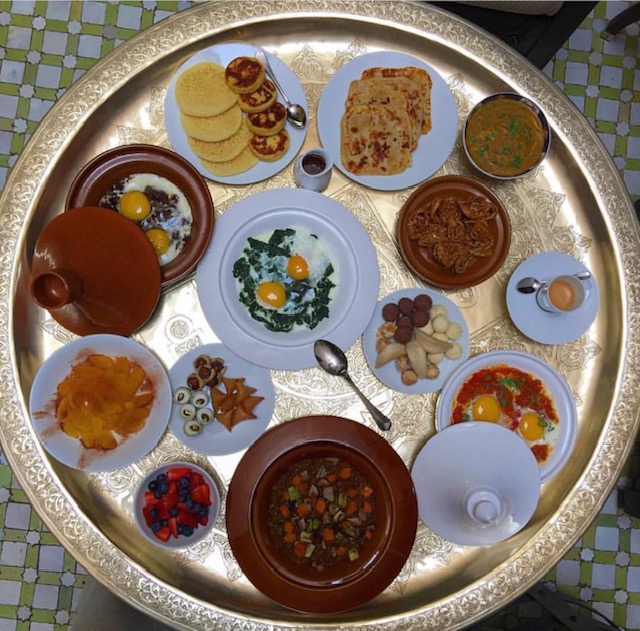
Discover Authentic Moroccan Breakfast Delights!
Are you a fan of Moroccan food?
From fluffy msemen to flavorful beghrir, our breakfast options are sure to satisfy your cravings.
So, what are you waiting for? Head over to our Moroccan breakfast page now and indulge in the flavors of Morocco!

